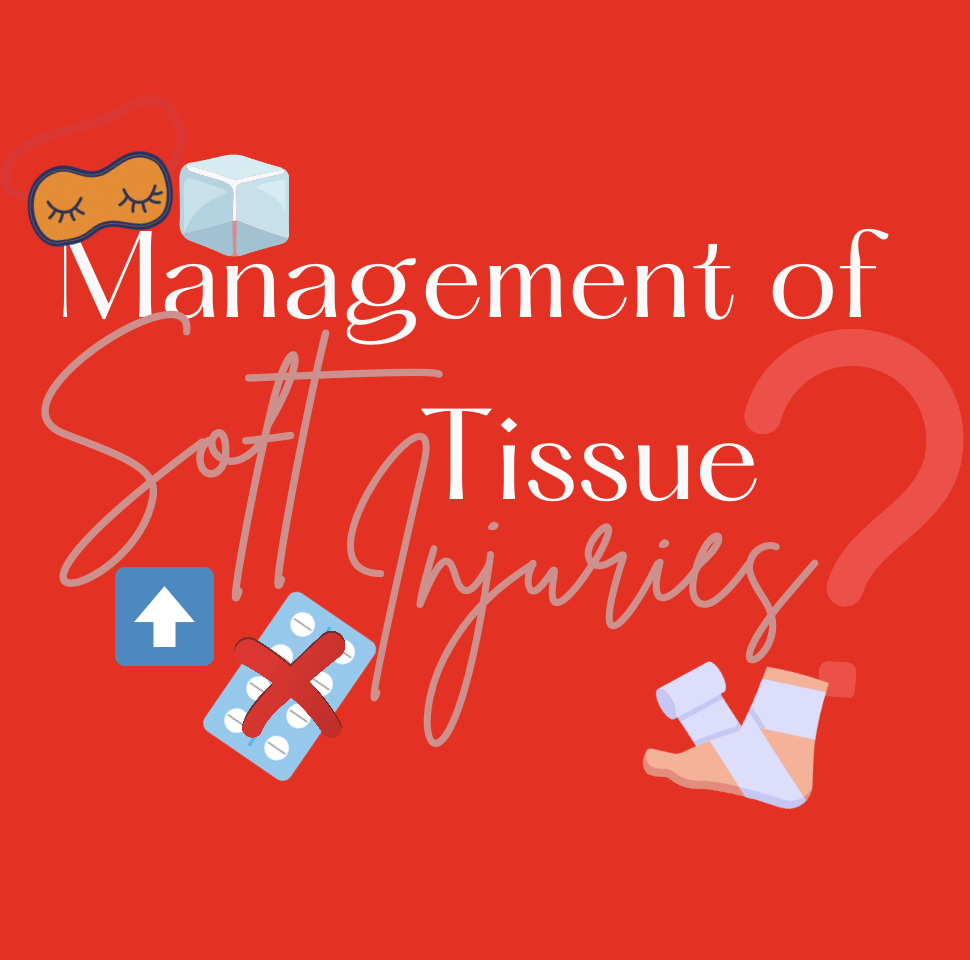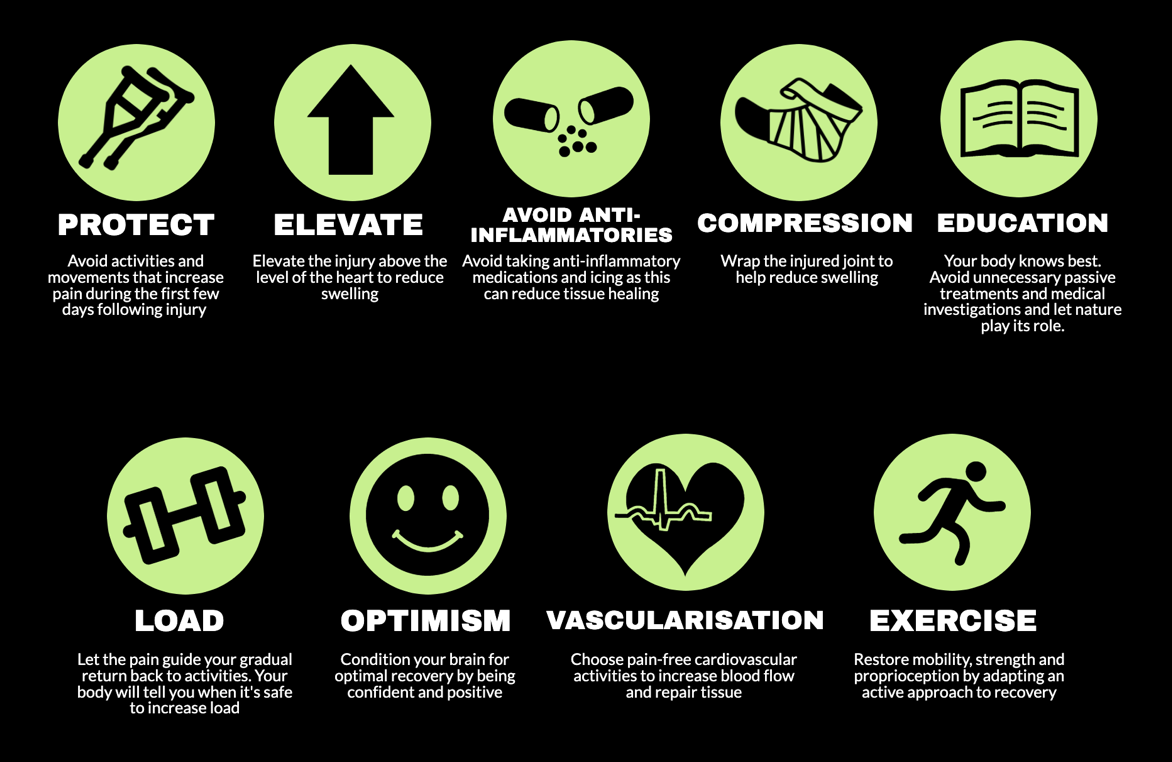Management of Soft Tissue Injuries
Over the years there have been many acronyms that have helped guide the management of soft tissue injuries - from ICE, RICE, PRICE and POLICE. The RICE acronym being the most widely known which involves:
A new acronym has since been proposed by Dubois & Esculier (2019) addressing the whole recovery continuum in the management of soft tissue injuries, including immediate care (PEACE) through to subsequent management (LOVE). When compared to the RICE method and other previously aforementioned acronyms, PEACE & LOVE covers all the phases of tissue healing whilst the earlier adaptations only guide management for the first few days following injury.
So why do we need PEACE & LOVE and what does this really mean?
Immediately after a soft tissue injury, do no harm and let PEACE guide your approach
PROTECT
Reduce loading or limiting aggravating movements for the first 1-3 days minimises bleeding and prevents over loading of the injured fibres. Minimise prolonged rest as this can compromise strength and quality of tissue repair. Instead let pain guide your gradual return to loading
ELEVATE
Elevating the limb higher than the level of the heart promotes fluid to flow out of the injured tissue
AVOID ANTI-INFLAMMATORIES
Anti-inflammatory medications (e.g. Nurofen, Voltaren) can delay the onset and negatively affect long-term tissue healing as this inflammatory process is critical in various phases of tissue regeneration. Inhibiting this process could therefore impede the overall healing process.
Similarly, ice can disrupt this inflammatory process as well as reduce blood flow to the area, processes that are crucial for tissue healing. Although widely accepted, there is minimal high-quality evidence that actually supports the use of ice as an effective treatment for soft tissue injuries. The use of ice should be considered as pain relief only.
COMPRESSION
The use of external compressions through taping or bandaging can reduce swelling within the joint
EDUCATION
Book in with your physiotherapist for advice and strategies on:
The many benefits of an active approach to therapy
The injury and expected timeframes for recovery
How to manage load and avoid overtreatment such as the requirement for injections, surgeries or procedures that involve increased costs.
After the first days have passed, soft tissues need LOVE
LOAD
An active approach to recovery with movement and exercise is encouraged and return to normal activities should occur as soon as symptoms allow. Optimal loading without increasing pain promotes tissue repair and rebuilds the tissues tolerance.
OPTIMISM
The brain plays a crucial in rehabilitation interventions. Psychological factors such as fear, catastrophizing and depression can act as barriers to recovery by negatively influencing outcomes and prognosis of injury. It is important to stay realistic but encourage optimism to improve the likelihood of optimal recovery.
VASCULARISATION
Cardiovascular exercises promote increased blood flow to injured structures to facilitate tissue healing. Other benefits of early movement and aerobic exercises include: the reduced need for pain medication and improved function and work status
EXERCISE
Exercise can help restore mobility, strength and proprioception early after an injury. However, listen to your body! Pain should be used as a guide to progress exercises gradually to increased levels of difficulty.
By Kiyomi Lim, Physiotherapy Student at Exercise Thought
References:
Dubois, B., & Esculier, J. (2019). Soft-tissue injuries simply need PEACE and LOVE. British Journal Of Sports Medicine, 54(2), 72-73. doi: 10.1136/bjsports-2019-101253
Bleakley, C. M., Glasgow, P., & MacAuley, D. C. (2012). PRICE needs updating, should we call the POLICE?. British journal of sports medicine, 46(4), 220–221. https://doi.org/10.1136/bjsports-2011-090297



